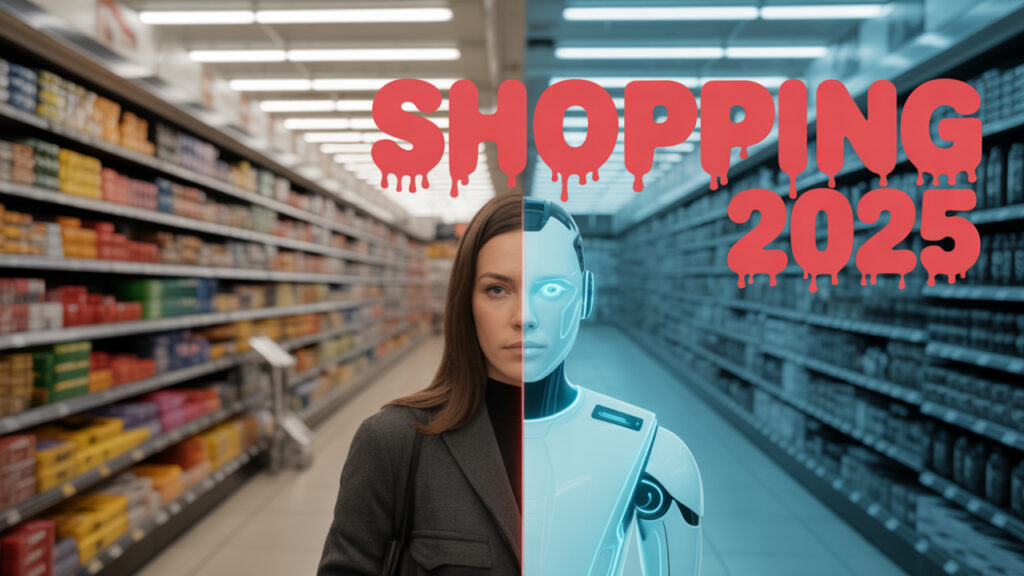The AI-Powered Customer: Trust, Ethics, and Hyper-Personalization in Retail (Part 3)
Catch up on earlier parts:
• Part 1 – How AI Is Transforming Shopping Habits
• Part 2 – AI and the Future of Shopping in 2025
Introduction
In the first two parts of this series, we explored how AI is changing shopping behavior. We looked at smarter recommendations, new shopping channels, and the role of psychology in purchasing decisions.
Now, in Part 3, we shift focus to the AI-powered customer. In the future, shoppers will not only react to AI—they’ll use their own AI assistants to demand better choices, more transparency, and stronger ethics from brands. Trust, control, and personalization will define retail beyond 2025.
Customers with Their Own AI
The next stage of shopping won’t be brands guiding customers—it will be customers guiding brands through AI.
- Personal AI Assistants: Shoppers will rely on their own AI tools to compare prices, filter products by ethics or sustainability, and recommend the best options.
- Data Wallets: Instead of companies storing everything, customers will keep personal “data wallets” and decide what to share with each brand.
- Smart Summaries: Instead of browsing endless products, AI assistants will present a short, clear list of the top options that match the customer’s needs.
Trust as the New Currency
As AI becomes more powerful, customers will value trust and honesty above all.
- Transparency Dashboards: Brands may show why a product was recommended—based on past purchases, preferences, or browsing history.
- Asking Instead of Tracking: Instead of hidden tracking, brands will openly ask customers what they want to see.
- AI Audits: Just like “organic” or “fair-trade” labels, we may see certifications proving that a brand’s AI is fair and unbiased.
The Next Level of Personalization
AI personalization will go beyond “you might also like.” It will connect to real life and adapt to changing needs.
- Context-Aware Shopping: Training for a marathon? Your AI assistant will suggest the best shoes. Running low on groceries? It will recommend recipes and auto-order supplies.
- Multiple Profiles: Customers may use different profiles—work, travel, casual—each with its own preferences.
- Made-for-You Products: AI could design custom clothes, furniture, or art based on your taste and measurements.
Shopping with Ethics and Values
Future customers won’t just buy what’s convenient—they’ll ask if it’s ethical.
- Transparent Supply Chains: AI will check if a brand’s claims about sustainability or fair labor are true.
- Impact Scores at Checkout: Before buying, customers may see the carbon footprint or labor score of a product.
- Fair Pricing: Instead of hidden dynamic pricing, ethical brands may use flat or membership-based models.
Risks to Watch
AI in shopping comes with challenges:
- Filter Bubbles: Over-personalization may limit discovery and creativity.
- Inequality: High-quality AI assistants may only be available to wealthier shoppers.
- Regulation: Governments will likely step in if AI recommendations cause harm or bias.
How Brands Can Prepare
To succeed with AI-powered customers, brands need to act now:
- Be transparent about how AI works.
- Give customers control over personalization.
- Partner only with ethical AI providers.
- Combine AI with a human touch for trust and empathy.
Conclusion
In Parts 1 and 2, we showed how AI is reshaping shopping. In this part, we looked ahead to a future where customers themselves bring AI into the shopping experience. Success won’t come from the smartest technology alone—it will come from trust, ethics, and customer control.
The question for every retailer: Are you ready for the AI-powered customer?



